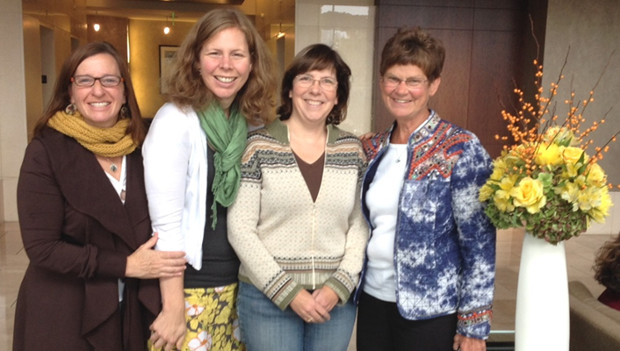Patient-researcher helps advance care for other breast cancer survivors

Dianne Johnson tells how SIMBA study found room for improvement in information and support after breast cancer treatment.
Dianne Johnson is a patient co-investigator for the Patient-Centered Outcomes Research Institute (PCORI)-funded Surveillance Imaging Modalities for Breast Cancer Assessment (SIMBA) study at Kaiser Permanente Washington Health Research Institute.
As a patient co-investigator actively involved from the beginning in a several-year research project, I’m excited to see milestones reached — and results shared. The Surveillance Imaging Modalities for Breast Cancer Assessment (SIMBA) team recently published our first findings: “Women’s Experiences and Preferences Regarding Breast Imaging after Completing Breast Cancer Treatment” in Patient Preference and Adherence. I’m encouraged to continue in this work, because I believe this article could be a springboard for changes in clinical practice.
When we began our listening to participants in six focus groups around the country, we weren’t surprised that many women experienced anxiety around imaging to look for any more cancer after their breast cancer diagnosis and treatment. Many women experienced discomfort during breast imaging, as well as worry that the imaging would detect more cancer.
Much anxiety could be eased
What did surprise us is that much of their anxiety could be lessened. Of course patients have a variety of concerns. They reported lots of types and frequencies of imaging — and a range of imaging experiences and preferences. But they wanted more information about the transition from treatment to follow-up, to improve their care.
That’s why we think that a simple conversation at the time of arranging appointments for follow-up breast imaging could provide an opportunity for education specific to that patient. Topics could include:
- what their particular risk for recurrence might be,
- why one mode of imaging is best for their situation (mammography and/or breast MRI), and
- what — if any — health risks are possible with their imaging plan.
Imaging clinics might also find these findings valuable, because the article mentions obstacles women encounter during their exams. In creating local listening teams, perhaps there could be ways to address stresses due to painful exams, payment worries, the manner in which women receive imaging results, or other issues that arise.
I am grateful to have worked alongside researchers who have valued the experiences of patients and persisted to see this article to publication. Many patients were involved in SIMBA, and Mary Bush and I have served as patient co-investigators. We helped to develop the project and served as liaisons between the advisory board and the scientific team. Susan Brandzel, MPH, is this article’s first author. She’s now at the Service Employees International Union (SEIU), but she used to be a project manager at GHRI.
PCORI funded SIMBA as a comparative effectiveness research study comparing mammography with breast MRI plus mammography for women with a personal history of breast cancer. KPWHRI Associate Investigator Karen Wernli, PhD, is the principal investigator of SIMBA.
In addition to Ms. Bush, Ms. Brandzel, Dr. Wernli, and me, our other coauthors on this paper are Dori Rosenberg, PhD, an assistant investigator at KPWHRI; Karla Kerlikowske, MD, of the University of California, San Francisco; Tracy Onega, PhD, of Dartmouth University; Louise Henderson, PhD, of the University of North Carolina, Chapel Hill; Larissa Nekhlyudov, MD, MPH, of Harvard Medical School; and Wendy DeMartini, MD, of Stanford University School of Medicine.
You can learn more about SIMBA — with an emphasis on listening to patients and the role of us patient co-investigators — by watching our video “Making Medicine Better by Working Together.”
Learn more about Kaiser Permanente Washington Health Research Institute and sign up for our free monthly newsletter.


